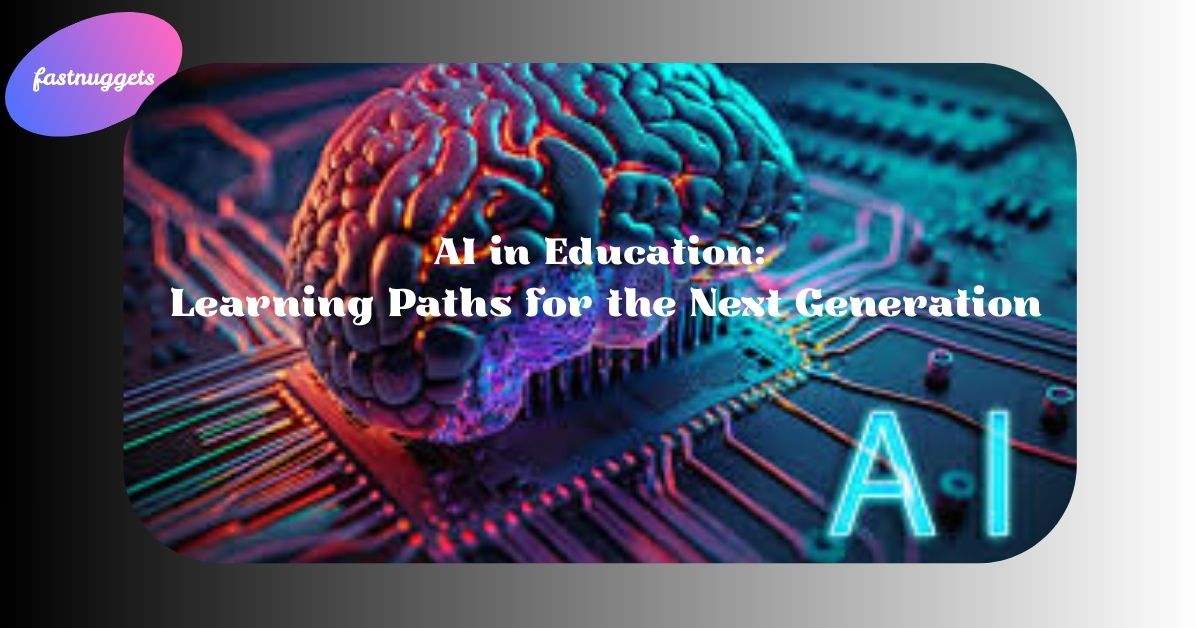As someone who’s deeply passionate about education, I’ve always believed that every student learns differently. Some thrive in fast-paced environments, while others need more time to absorb new concepts. Unfortunately, traditional classrooms often take a “one-size-fits-all” approach. But now, Artificial Intelligence in education is changing that by creating personalized learning paths for each student and I couldn’t be more excited about the possibilities.
Why Personalized Learning Matters
When I was in school, I often noticed how some classmates would finish assignments in minutes while others struggled to keep up. Teachers did their best, but with large class sizes, it’s nearly impossible to tailor lessons for every individual.
That’s where AI-powered education tools step in. Using machine learning algorithms, these systems can assess a student’s strengths, weaknesses, and learning style. Then, they design a customized path that moves at the right pace and focuses on areas where improvement is needed.
For example, if a student excels in math but struggles with reading comprehension, the AI can assign more reading exercises while still challenging them in math. This approach not only boosts confidence but also ensures no one is left behind.
How AI Creates Personalized Learning Paths
Here’s how it typically works:
- Assessment and Data Collection – AI analyzes quizzes, assignments, and even engagement patterns.
- Pattern Recognition – It identifies where a student is struggling or excelling.
- Customized Recommendations – The AI suggests lessons, exercises, and resources tailored to the learner.
- Real-Time Feedback – Students get instant corrections and explanations to help them improve immediately.
From my perspective, this is a game-changer. Instead of waiting for the next test to see where you went wrong, you can correct mistakes in the moment.
AI as a Teaching Assistant
While I don’t believe AI should replace teachers, it’s an incredible teaching assistant. For instance, AI can handle tasks like grading multiple-choice questions or generating practice problems. This frees up teachers’ time so they can focus on mentoring, motivating, and building deeper connections with students.
Some platforms even allow teachers to track each student’s progress on a dashboard, making it easier to provide targeted support.
Making Learning More Engaging
Let’s be honest — learning can feel boring if it’s too repetitive. AI changes that by introducing adaptive content. Imagine a history lesson presented as an interactive story or a math problem turned into a game.
I’ve tried AI learning platforms that reward you with points, badges, or unlockable challenges. It feels less like “studying” and more like “playing,” which is especially effective for younger learners.
Breaking Language and Accessibility Barriers
One thing I admire about AI in education is its ability to make learning more inclusive. Students with disabilities benefit from AI-powered tools like speech-to-text for those with mobility challenges or text-to-speech for the visually impaired.
Language barriers are also becoming less of an issue. AI translation tools can instantly convert lessons into different languages, ensuring that students from diverse backgrounds have equal learning opportunities.
Examples of AI-Powered Education Tools
Some well-known platforms using AI for personalized learning include:
- Khan Academy – Offers adaptive practice exercises and hints.
- Duolingo – Uses AI to track your language learning progress and adjust difficulty.
- Socratic by Google – An AI tutor that explains concepts step-by-step.
- Smart Content Platforms – Systems that automatically generate summaries, quizzes, and flashcards.
I’ve personally used a few of these, and the difference in learning efficiency is remarkable.
The Benefits for Students and Teachers
For students, AI means faster progress, higher engagement, and lessons tailored to their unique needs. They’re no longer competing with the class average they’re learning at their own best pace.
For teachers, AI takes away the burden of repetitive administrative work, allowing them to focus on creativity, mentorship, and emotional support. It’s a partnership where technology handles the data, and humans handle the heart.
Potential Challenges and Concerns
While I’m a big supporter of AI in education, I think we need to address a few challenges:
- Access Inequality – Not all schools have the resources for AI tools.
- Data Privacy – Student information must be protected at all costs.
- Over-Reliance on Technology – Students still need critical thinking and social skills that can’t come from machines alone.
- Teacher Training – Educators need proper guidance on integrating AI into their teaching.
These are important conversations to have as we embrace this technology.
The Future of AI in Education
Looking ahead, I believe AI will make learning even more immersive. Imagine virtual reality classrooms where AI tutors guide you through ancient Rome or inside the human body. AI could also help identify students’ career strengths early on, guiding them toward subjects they’re most passionate about.
The beauty of AI is that it can evolve alongside the learner constantly adjusting and improving based on new skills and interests.
Conclusion
As I reflect on how far we’ve come, I’m convinced that AI in education isn’t just a trend it’s the future. Personalized learning paths are giving students the chance to reach their full potential, no matter where they start.
For me, the goal is clear: use AI not to replace teachers, but to empower them and their students. The next generation deserves an education that adapts to them, not the other way around
